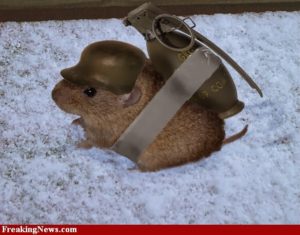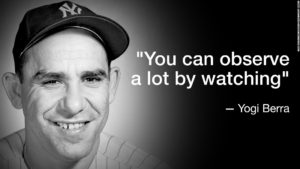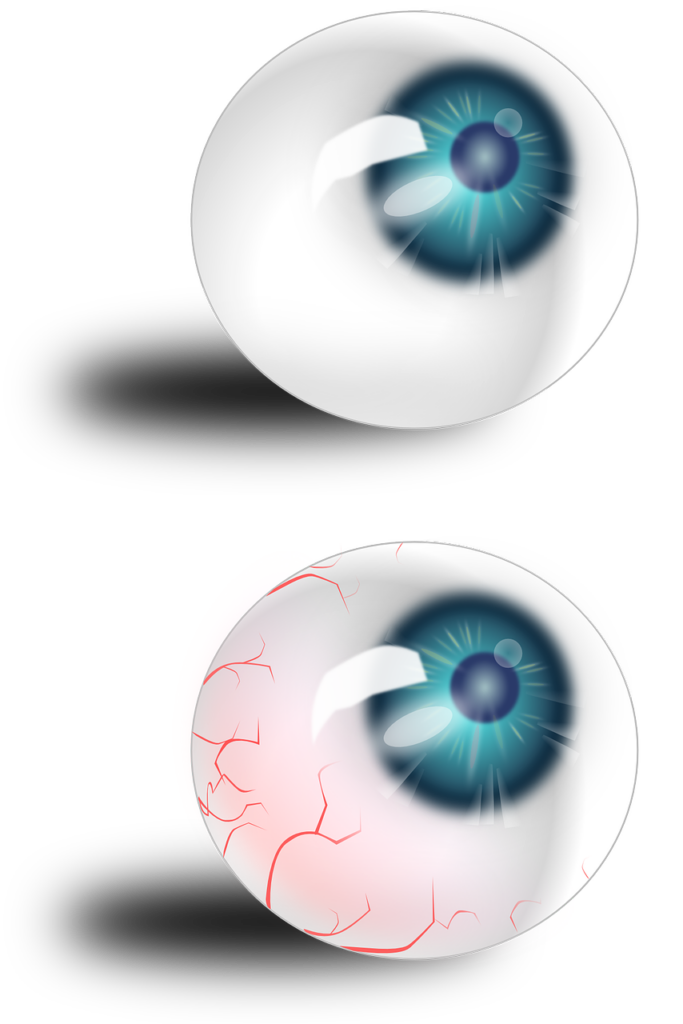
By PJ Parrish
I was watching one of my favorite movies recently, Sideways. I watch it over and over, not only because I enjoy it but also because of what it teaches me about writing great dialogue. There are a handful of these movies I return to again and again – Moonstruck, Casablanca, Bull Durham, The Godfather, Chinatown, Lawrence of Arabia, The Apartment — just to try to see how the magic is done.
So I get to the scene in Sideways where erstwhile novelist Miles has just learned his latest 800-page doorstop has been rejected yet again. Miles descends into a funk fog and laments to his friend Jack:
“Half my life is over, and I have nothing to show for it. I’m a thumbprint on the window of a skyscraper. I’m a smudge of excrement on a tissue surging out to sea with a million tons of raw sewage.”
Which brings us, quite vividly, to our topic of the day – the metaphor. One of our regulars, Jim Porter, has asked us to devote a post to the subject: “I quote Bobcat, when he was Bobcat. At some point, would y’all please write about metaphors–particularly the danger of mixing metaphors. I guess one question is, when is a metaphor finished so you can use another one? We covered this in college, of course, but I would appreciate a review.”
Normally, I don’t give metaphors much thought. I’m of the mind that the metaphor (and its sister the simile) is a lot like sex. If you think about it too hard you’re not doing it right. But then I sat through a day of cable TV political news wherein I discovered that…
The goalposts had been moved…
And we need to level the playing field…
But that might lead us down a slippery slope…
Because all we’re doing is rearranging the deck chairs on the Titanic…
And the solution is just a Trojan horse…
Makes me long for the good old days of top-rate political metaphor, like when Rep. Devin Nunes called the guys trying to shut down the government “lemmings in suicide vests.”
Metaphors and similes permeate our lives. I don’t think we even realize how much because they are so ingrained in our language, a sort of shared currency of comparison that we all use. We use metaphors to make sense of the world around us, to make the abstract concrete. We eat our hearts out and are starved for affection. We shoot down arguments and bottle up our anger. We open cans of worms and close the books on things. And while all of us have gotten to the fork in the road, more than a few of us lament the road not taken.
In simplest terms, a metaphor is a figure of speech that makes a comparison between two seemingly unlike objects or concepts. By portraying a person, place, thing, or action as being something else, a metaphor gives us a more vivid description or helps us understand something better. When done well, a metaphor also ignites some special spark of recognition in your reader, where they say to themselves, “Yes! I see that! I know exactly what he is trying to tell me.”
Pause for definition: What’s the difference between metaphor and simile? (I sometimes get this wrong, but then I can’t get the lay-lie thing right either.)
Simile: Richard is as brave as a lion. Richard has a heart like a lion. My ex-husband is like a snake in the grass. Metaphor: Richard is a lion. My ex-husband is a real snake.
So how do we take these humble parts of speech and use them to enrich our novels? How do we turn the mundane into the sublime without resorting to clichés?
Aye, there’s the rub.*
*Metaphor, archaic. Origin: in ancient game of lawn bowling, a rub is a fault in the surface of the green that stops a bowl or diverts it from its intended direction.
I’m finding this topic hard to deal with. Good metaphors are like modern art or pornography. I know it when I see it but don’t ask me to define it. Maybe I’m just not the sharpest bulb in the drawer. I think it’s time for some examples:
Good Metaphors/Similes
“The water made a sound like kittens lapping.” — The Yearling by Marjorie Kinnan Rawlings.
“Let us go then, you and I, when the evening is spread out against the sky like a patient etherized upon a table.” — TS Eliot, The Love Song of J. Alfred Prufrock.
“Life’s but a walking shadow, a poor player that struts and frets his hour upon the stage and then is heard no more. It is a tale told by an idiot, full of sound and fury, signifying nothing.” – Macbeth, Shakespeare.
“The sky above the port was the color of television, turned to a dead channel.” – Neuromancer, William Gibson.
“Her voice is full of money.” – F. Scott Fitzgerald, The Great Gatsby.
And one of my faves: “Honey, you are a regular nuclear meltdown. You’d better cool off.” ― Susan Sarandon in Bull Durham.
Here are two of Stephen King’s favorites, straight out of the great pulp tradition:
“I lit a cigarette that tasted like a plumber’s handkerchief.” – Raymond Chandler.
“It was darker than a carload of assholes.” — George V. Higgins.
Bad Metaphors/Similes
There are a couple reasons why things can go bad.
Cliches: Usually, metaphors fail because they aren’t fresh. Metaphors are at their most powerful when they are original, inciting new ways of looking at things. These are old and tired and should never appear in your novels: the elephant in the room, deader than a doornail, her hair was spun gold, his eyes were like emeralds and he had movie star teeth. No, don’t even use “Chiclet teeth” because it isn’t yours; someone got there before you.

Non sequiturs. Sometimes, the metaphor just doesn’t make sense. I always think of Yogi Berra here, though he was technically the master of the malapropism. (“Texas has a lot of electrical votes.”). Lawrence Harrison, an op-ed writer for the Washington Post, came up with a great word malaphor, which is a mash up of malapropisms and metaphors. Click here to see his hilarious blog devoted to it. The best example I found of this is from Stephen King’s On Writing, from a novel he refused to name:
“He sat stolidly beside the corpse, waiting for the medical examiner as patiently as a man waiting for a turkey sandwich.”
Why does this fail? Because what does waiting for a turkey sandwich have to do with patience? As Scooby-doo said, “huh?”
Here’s one of my favorite malaphors — and once again, it comes from politics. If you don’t get this, that’s okay. My wish for you, regardless, is that you live long and prosper:
“I’m presenting a fair deal, the fact that they don’t take it means that I should somehow do a Jedi mind-meld with these folks and convince them to do what’s right.” — President Obama
Mixed metaphors. I promised I’d get to this, Jim, so here we go. There’s a fancy name for mixed metaphors – catachresis. Who knew? This is where the writer gets his creative wires crossed and juxtaposes two unrelated comparisons in a single part of speech. Examples: She grabbed the bull by the horns of the dilemma . We have to get all our ducks on the same page. Let’s burn that bridge when we come to it. Here is a memorable one from Dan Rather: “They counted the votes until the cows had literally gone to sleep.” And Al Gore once reminded us that “a leopard can’t change his stripes.” A couple more:
“All at once he was alone in this noisy hive with no place to roost.” -Tom Wolfe, The Bonfire of the Vanities.
“Anyone who gets in the way of this cunning steamroller will find himself on a card-index file and then in hot–very hot–water.” — Len Deighton, Winter: A Novel of a Berlin Family.
“He had that reputation. Some people thought he was over it, but old dogs rarely change their spots.” — David Baldacci, Hour Game.
And here’s a doozy from a Pentagon staffer quoted in the Wall Street Journal complaining about efforts to reform the military: “It’s just ham-fisted salami-slicing by the bean counters.” Actually, there is something rather satisfying about this one, sort of like a Golden Corral all-you-can-eat word buffet .
Now here’s a caveat about mixed metaphors: Sometimes they can work. But you really have to know what you’re doing to pull this off. In the Len Deighton example above, I suspect he was purposely making his speaker sound obtuse. And then there are the rule-breakers, those writers who can juggle with chain-saws (don’t try this at home, kids). They mix and match metaphors to create an avalanche of style or an emotional effect:
“The moon was full. The moon was so bloated it was about to tip over. Imagine awakening to find the moon flat on its face on the bathroom floor, like the late Elvis Presley, poisoned by banana splits. It was a moon that could stir wild passions in a moo cow. A moon that could bring out the devil in a bunny rabbit. A moon that could turn lug nuts into moonstones, turn little Red Riding Hood into the big bad wolf.” — Tom Robbins, Still Life with Woodpecker.
And two lines I wish I had written:
“The voice of your eyes is deeper than all roses. Nobody, not even the rain, has such small hands.” — ee cummings.
Okay, time for some rules. Well, not rules really, because I don’t believe in rules when it comes to writing. But here are some guidelines about how to use metaphors and similes.
Keep It Simple, Stupid. Similes and metaphors should be useful, concise, and at best even memorable. If you work too hard at it, your exertions will show on the page. Like I said, it’s like sex. Bring your best technique, be creative, but relax, or it ain’t gonna happen.
Make Me Stand Up and Salute. An effective metaphor has the power to stir because it triggers a deep sense of recognition in the reader, relating to something in his experience and eliciting an emotional reaction. Often, the metaphoric connection is simplicity itself. This is a simile but it is one of my all time favorites from the late-great sportscaster Stuart Scott:
He’s cooler than the other side of the pillow.

Pure geometry!
Be Original: If a simile or metaphor doesn’t rise above the merely mundane, it won’t work. This is hard work, coming up with something that is uniquely your own. But this is where the book is made, where your voice emerges. Don’t go with what is facile, dull, easily digested. Don’t be content to be literal and tell us someone is as “beautiful as a young Elizabeth Taylor.” Find a new way to spark the reader’s imagination and let them fill in the gaps. When I was struggling to describe my female protag (who I envisioned as looking like a young Charlotte Rampling), I didn’t say she had high cheekbones and hooded eyes. I gave her a childhood memory about watching cheerleaders and what her father told her about beauty:
They’re plain arithmetic, Joey. You’re geometry. Not everyone gets it.
Here is one of my favorite bloggers Chuck Wendig on the subject. Click here for complete blog:
“Metaphors represent an authorial stamp. They’re yours alone, offering us a peek inside your mind. When a reader says, “I would have never thought to compare a sea squirt to the economic revolution of Iceland,” that’s a golden moment. The metaphor is a signature, a stunt, a trick, a bit of your DNA spattered on the page.”
Bend Me, Shape Me. Good metaphors are entertaining. They sneak up on the reader, tickling them, making them smile. Bend your images like Beckham and watch them soar and swerve. Don’t you love this one from Matt Groening:
“Love is a snowmobile racing across the tundra and then suddenly it flips over, pinning you underneath. At night, the ice weasels come.”
If you are struggling with metaphors, read some good poetry. Emily Dickinson is a great place to start. (“Hope is a thing with feathers…”) Langston Hughes is another (if dreams die, life is a broken-winged bird that cannot fly…”) But maybe this is the best metaphor ever?
The fog comes
on little cat feet.
It sits looking
over harbor and city
on silent haunches
and then moves on.
Stay in Your POV: We hear a lot these days about writing from an “intimate” point of view. Basically, all that means is being so firmly in your characters sensibilities that every word, gesture, thought and description is filtered through their personal prisms. So that must include whatever metaphors/similes you assign to them. A metaphor must arise organically from the character’s experience, age, background and even geography. A woman who grows up on an Iowa farm isn’t going to produce the same metaphoric connections that a Manhattan socialite might.
In my latest book, SHE’S NOT THERE, my protag is a skip tracer but also an avid birder. That gave me many chances to extend the metaphor through the lens of bird-watching.
Whenever he was in a place like this, or any place where humans gathered, he saw himself as a big bird of prey — a peregrine falcon maybe — soaring high above and looking down at the world from all angles. He could see things that others, so intent on their little ground lives, could not. He could see the big picture.
Later, this man compares a person he is chasing to a crow because crows are the smartest animals on earth. He remembers watching a crow deposit acorns in the middle of a busy street so cars would crack them open. The crow even learned how to time the red lights to go out and safely retreat the nuts.
Pay special attention to where your character is from and look for ways to use that in metaphors. When my skip tracer notices the color of a man’s eyes, he doesn’t compare them to jade. He says they are the color of the Cumberland River on a cloudy day. Now, I bet you haven’t seen the Cumberland but I am trusting you can imagine a muddy rural river and supply the missing metaphor.
Know When to Quit
This was part of Jim’s original question to us here at TKZ and I think it is an important one: “When is a metaphor finished so you can go on to the next one?” I had a friend who did stand-up comedy and he used to talk about “layering” — taking a basic bit and milking it for a extra laughs. But he said you had to know when to stop. So it should be with metaphors. Usually, the simpler the better and you don’t want it to go on too long or it begins to feels forced, like it’s just you the writer showing off. I had to delete a couple bird metaphors from my book because it was losing its impact. Metaphors and similes are special; they are the jewels you add for extra sparkle, something to delight. Maybe it’s helpful to think of them as accessories and remember what Coco Chanel advised about that:
“Before you leave the house, look in the mirror and take one thing off.”
But how many per book or chapter? That’s something you just have to develop an ear for. Because writing is music, after all. And if the note feels false to you, you better believe it will be a clanger for the reader — and you don’t want a Metallica concert going on in your book. I resist the urge to insert too many metaphors — the birds! — which isn’t difficult because they come hard for me anyway.
Speaking of quitting…as my Tupelo-born friend Phillip says, I’m wiped cleaner than a blackboard. So, it you’ll excuse me, I’m off like a herd of turtles. I know we’ve barely scratched the tip of the iceberg, but it’s time to get writing. So let’s roll up our elbows, put our shoulders to the grindstone and get back to rapsodizing and metaphorizing. Now go nail one out of the park!






